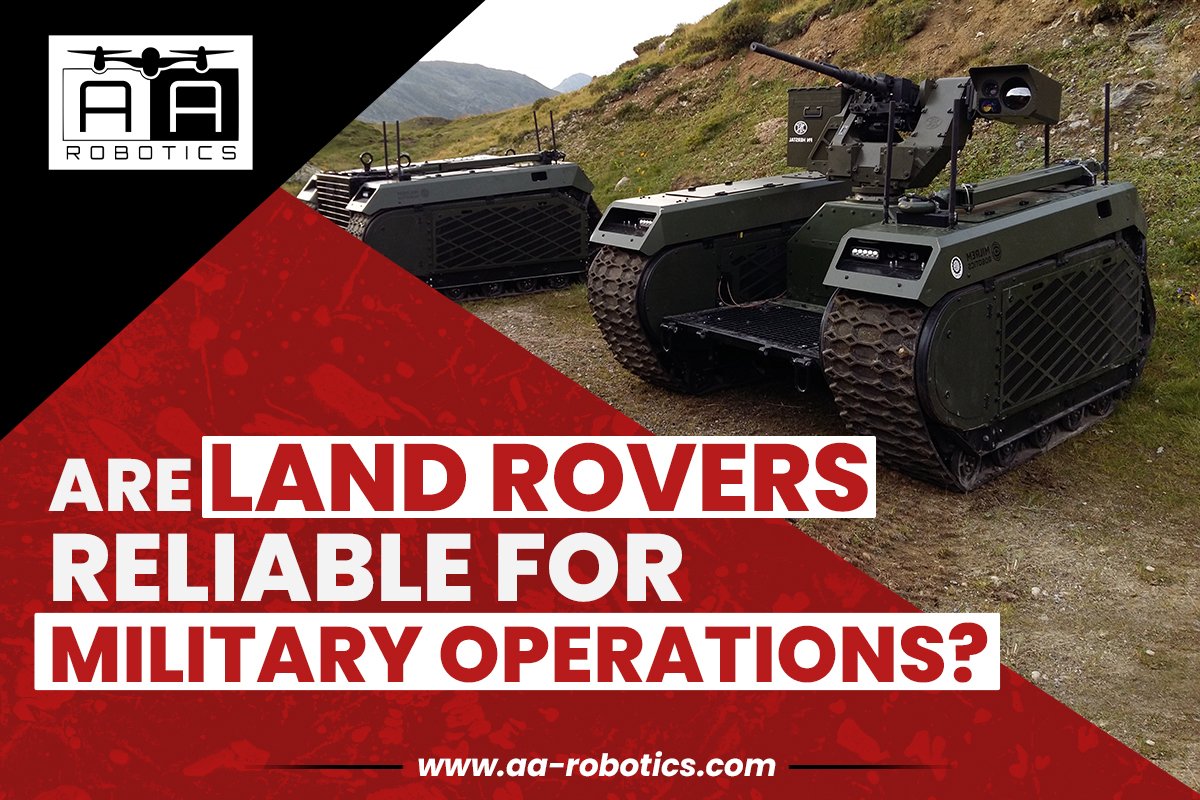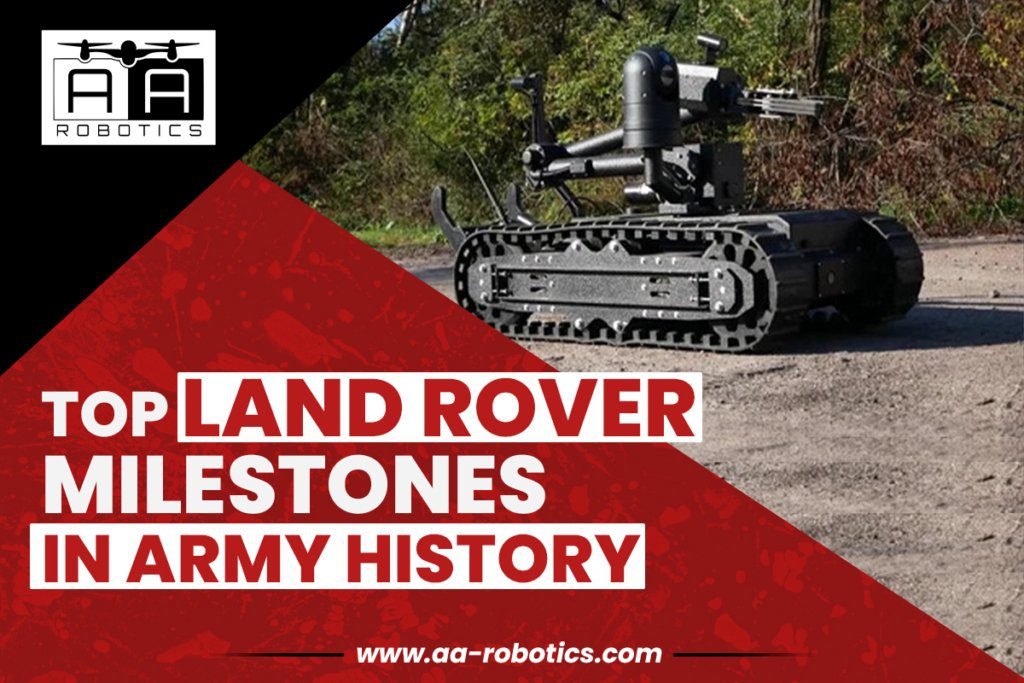
Are Land Rovers Reliable for Military Operations?
Land Rovers have always been known for strength, trustworthiness, and off-road ability over the years. Having emerged as an early agricultural development, the Land Rover is a globally recognised vehicle used by explorers, adventurers, and armies. In military contexts where reliability and performance are so crucial, do Land Rovers cut it? This blog by AA Robotics explores the deep history, design, and functionality of Land Rovers in terms of evaluation of base suitability in military use, emphasizing survival in extreme conditions during operation.
A Brief History of Land Rovers Serving in the Military
The Land Rover was a general-purpose utility vehicle introduced in 1948. In a remarkably short period, owing to its rugged design and off-road capabilities, many armed forces around the world were interested in it.
During the 1950s, militaries in most parts of the world included Land Rovers in their inventory.
Top Land Rover Milestones in Army History

1951: The armies worldwide adopted the Series I Land Rover, marking the beginning of its military career.
1960s: Land Rovers showed their durability and versatility in the Falklands War.
1990s: The Defender, with its superior capabilities and modular design, was the mainstay of the military.
Modern Era: Specialized models such as the Wolf (Defender XD) now carry out various roles, including reconnaissance, troop transport, and logistics.
This timeline highlights Land Rover’s enduring evolution and contributions to military operations worldwide.
Features That Make Land Rovers More Suitable for Military
Land Rovers have been designed to be capable for practical, challenging environments. Some of the features that give them a great promise on reliability are:
Strong Construction
The Land Rovers have a strong chassis and aluminium body panels that are corrosion-resistant. This gives the vehicles toughness and resilience against extreme conditions.
Off-Road Capability
Land Rovers have advanced four-wheel-drive systems that enable them to go through sand deserts, jungles, and even snow-covered areas. Their high ground clearance and approach angles are ideal for military operations on difficult terrains.
Versatility and Modularity
Land Rovers can easily be customized for different military purposes. Additional parts such as weapon mounts, communication equipment, and armour plating can make them suitable for particular operations.
Durability in Extreme Conditions
From the icy arctic to the dry desolate tract, the Land Rovers are designed to survive harsh weather conditions. They have been confirmed to be long-lasting under a variety of circumstances; that’s an important prerequisite for navy automobiles that ought to preserve to function uninterrupted under uncertain instances.
Easy Maintenance
Their simple mechanical design makes repair in the field easy. Spare parts are readily available for older models, which further adds to their operational reliability.
Land Rovers: Weaknesses of Land Rovers in Military Operations
Although the Land Rovers have various strengths, they do have limitations. Among these, a few observed are as follows:
Payload capacity
The size of the Border Guardian Land Rovers is much smaller than other military vehicles, thus resulting in less payload capacity. These vehicles cannot, therefore, be used to transport bulky equipment or a large number of troops.
Armour and Protection
Standard Land Rovers do not offer sufficient protection against ballistic attacks and IEDs. Though armoured versions are available, they increase the weight, which in turn reduces the vehicle’s manoeuvrability.
Overhauls Sophisticated
The warfare of today requires the application of modern technologies such as GPS, communication systems, and surveillance equipment. Installing all these technologies in the Land Rovers is a pretty difficult task.
Old Versions
Some militaries continue using the older Land Rover models. These can hardly keep pace with contemporary operations and thereby raise issues about their future sustainability.
Are Land Rovers Still Relevant in Modern Military Operations?
With changing military operations, requirements for vehicles also change. Today, modern conflicts require highly advanced armor, high payload capacity, and cutting-edge technology in vehicles. Even though Land Rovers perform a specific niche, the competition from newer purpose-built military vehicles like JLTV (Joint Light Tactical Vehicle) is very tough.
However, the versatility, cost-effectiveness, and track record make Land Rovers a vital asset for some missions, especially in low-intensity conflicts and support roles.
Conclusion
Land Rovers have proven to be reliable military vehicles for several decades of service in diverse environments. Their rugged design and off-road capabilities make them a good choice for some specific roles, but such challenges as limited payload capacity and insufficient armor do come with the need for careful consideration when deploying them in modern operations.
For missions that demand mobility, reliability, and cost-effective value, Land Rovers are inescapably dependable. However, integrating modern facets from advancing technology will help make these wonderfully iconic yet so usefully relevant in military contexts
Yes, different militaries across the world use Land Rovers, although their applications are likely more specialized than they were during earlier decades.
Yes, Land Rovers can be armoured as well as fitted with other forms of protection equipment, though these factors do affect the vehicle’s performance and mobility.
Their off-road abilities, tough build, and ease of maintenance make them perfect for hard military terrains.
Land Rovers are generally cheaper than modern, highly specialized military vehicles, hence making them an economical vehicle for particular missions.
Land Rovers are very versatile and great for off-road performance, but modern army vehicles have better armouring, technology integration, and payload capacity.


